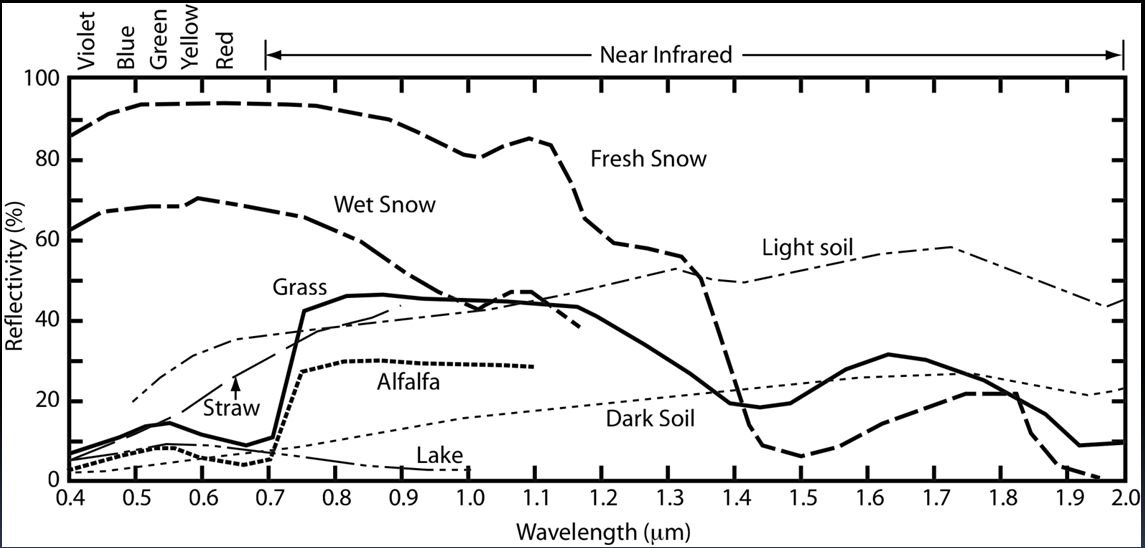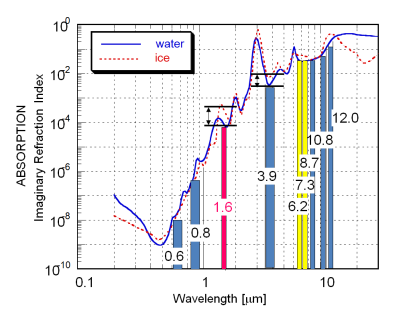The aim of this type of RGB is to distinguish the cloud-free snow covered land from fog or low level water clouds in a high resolution image. Wintertime fog frequently forms over snowy cloud-free surfaces in high pressure conditions. It is important to identify foggy areas, for example for purposes of traffic security.
The HRV fog RGB is created by combining data from two different channels. The 1.6 micrometer channel (NIR1.6) data is visualised in red, and the High Resolution Visible (HRV) image in green and blue. The NIR1.6 channel helps to discriminate snow-covered land from fog or low water clouds and water clouds from ice clouds. Its combination with HRV provides high resolution information on cloud structure and thickness. Note that one has to use HRV in two colours not too lose the high resolution, so only two different channels can be used in this type of RGB. This is a daytime RGB as it uses shortwave channels. Its main application period is in winter.
Physical basis
Separation between snow and fog or water clouds
The key channel of daytime snow detection is NIR1.6. Fig. 1 presents the typical shortwave reflectivity spectra of some surface types including snow. Considering that the spectral bandwidth of HRV is from 0.4 to 1.1 micrometers, while that of NIR1.6 is from 1.5 to 1.78 micrometers, one can see that the snow's reflectivity is much higher in HRV than in NIR1.6. Snow is bright in HRV and dark in the NIR1.6 image. Because water clouds reflect much of the radiation in both channels (not shown in Fig. 1), they can be used in combination to distinguish snow and water clouds.
| Figure 1: Typical shortwave reflectivity spectra of surface types. (Courtesy of Steve Ackerman, CIMSS) |

|
Separation between ice and water clouds
Ice crystals absorb radiation more strongly than water particles in the NIR1.6 channel (Fig. 2).
| Figure 2: Absorption spectra of water (blue curve) and ice (dashed red curve) and the spectral bandwidth of the SEVIRI channels (Courtesy of Daniel Rosenfeld, HUJ) |

|
Fig. 2 presents the imaginary refraction index of water and ice. This index characterises the absorption of the material, not the absorption of a cloud layer. A cloud layer's absorption depends on many other things as well (like number of the droplets/particles etc), but the absorption coefficient of the material has a dominant role. Due to the higher absorption of ice in the NIR1.6 channel the reflection of the ice clouds is lower than that of the water clouds. (Note that the difference between ice and water absorption is not small: it is visualised in a logarithmic scale.)